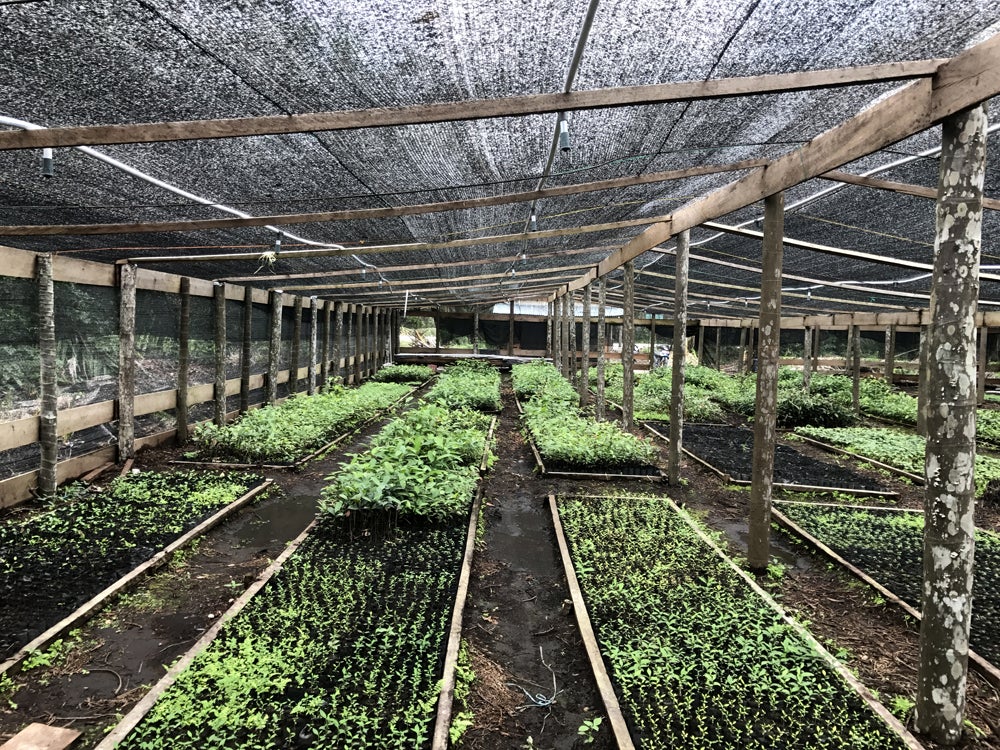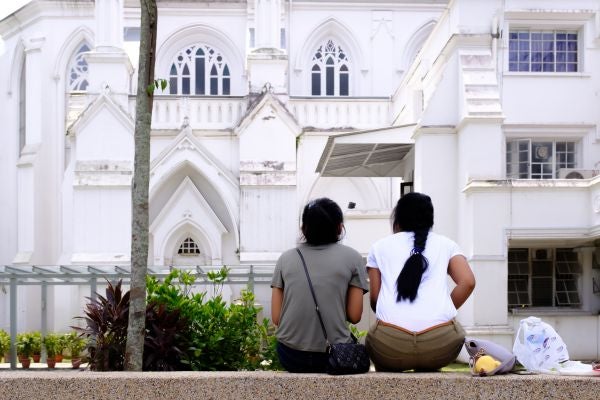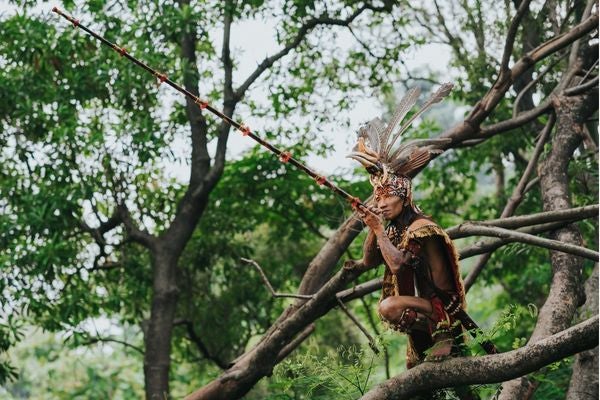How Covid-19 is affecting governance in Indonesia’s peatlands
Peatlands cover 8% to 12% of Indonesia’s land area, making Indonesia home to the largest deposits of tropical peatlands in Southeast Asia. Peatlands are naturally waterlogged, and organic matter accumulated below the water table remains in a semi-decomposed state, eventually turning into carbon-rich peat soil. In this way, peatlands help to moderate climate change by acting as natural carbon sinks.
Even though various regulations and moratoria exist to prevent Indonesian peatlands' conversion, thousands of hectares have already been converted due to the piecemeal application of regulations and lax enforcement. Peatlands continue to be under threat from unsustainable commercial agribusiness and community livelihood activities.
When these activities involve drainage, the exposed peat layer dries out quickly and become extremely fire-prone. Fires are also sometimes intentionally set as a cheap and quick way to prepare land for planting. Fires in peatlands release carbon-rich smoke that remains in the troposphere for extended periods and can travel great distances, resulting in local and transboundary haze pollution.

This article considers how Covid-19 presents unique challenges to communities living in or close to peatlands in Indonesia and evaluates the extent to which the government’s recovery plans can sustain pre-Covid-19 momentum towards improved peatland governance.
Covid-19 and Peatland Communities
Millions of Indonesian livelihoods are linked to peatlands. Communities living in and near peatlands are usually involved in agricultural activities, either through small-scale swidden agriculture or through employment on commercial plantations.

Oil palm is widely cultivated both commercially and independently in Indonesian peatlands. A pre-Covid-19 study found that people who live or work in agricultural land in Southeast Asia, especially for oil palm and rubber, are at higher risk of contracting infectious diseases. Especially for commercial plantations, close-quarter living and harsh working conditions mean that Covid-19 preventive measures are difficult to enforce. Indeed, Covid-19 cluster outbreaks have been detected among plantation workers in the worst pandemic-hit, peatland-rich province of Riau in Indonesia.
The Covid-19-related economic slowdowns have also meant that both commercial plantations and small-scale farmers now work on increasingly thin margins. While the Singapore Institute of International Affair’s Haze Outlook 2021 reported that commodity prices largely remained stable throughout Covid, a recent survey closer to the source reported that smallholders in Indonesia saw an average 5% decline in the selling price of palm oil Fresh Fruit Bunches since the pandemic started. This issue is compounded by the migration of workers from urban to rural areas due to unemployment (including foreign unemployment due to the closure of international borders), placing additional strains on existing peatland resources.
Limited resources and increased worker population may force plantations and farmers to switch to cheaper, faster, and potentially illegal land clearing methods using fire than more expensive mechanical or slower mulching methods. Similar considerations may also restrict the farmers’ capacity to pursue alternative sustainable livelihoods on peatlands, such as paludiculture or agriculture cultivation on wet peatlands.

Indeed, despite the wetter conditions and economic slowdowns in 2020, localised haze was nevertheless observed due to the burning of 206,751 hectares of forests and peatlands from January to September across Indonesia.
Exposure to haze can increase susceptibility to Covid-19, which is especially problematic in peatland areas with low access to health infrastructure and services and now rising poverty levels. Haze exposure is positively correlated with Covid-19 mortality by stressing the respiratory and cardiovascular systems. A recent study found that the Covid-19 mortality rate can reach up to 11% with an increase in 1 µg/m3 of long-term exposure to fine particulate matters, or PM2.5, a constituent of haze pollution.
Government Response to Covid-19
Reallocation of government budgets as part of the Covid-19 response has seen a 50% budget cut for Indonesian firefighting teams, a 34% reduction in the area of fire patrolling, and an overall reduced capacity to respond to fires. Strict lockdowns and social restrictions further disrupt the flow of resources for firefighting and peatland restoration and delay the implementation of crucial, time-sensitive activities such as seedling replanting for peat restoration, increasing the risk of repeated fires.
Additionally, in November 2020, the Indonesian government pushed through the Omnibus Law on Job Creation, a controversial law that amended many existing regulations to increase competitiveness, create jobs, and stimulate domestic and foreign investment, on the pretext of making it easier to do business in Indonesia. Critics have pointed out that the government used Covid-19 not only to justify the Law through a pandemic recovery response lens but also to circumvent regular public consultations. Despite this, there has been huge public outcry and demonstrations against the Law.
The Omnibus Law has rolled back several key environmental regulations meant to reduce unsustainable land-use change for plantations. The Law included the scrapping of a provision that required the maintenance of a minimum 30% watershed and/or island area as forest area and the shortening of a requirement for plantation companies to develop 30% of their concession areas from three to two years. Such deregulations have put fire-prone peatlands at risk of accelerated development.
The Law also recentralises the process of environmental assessments and monitoring and removes business-mandated environmental permits. This limits community participation and public rights to challenge unsustainable projects and risks setting back progress achieved in recent years.
However, the government did extend the Peatland Restoration Agency’s (BRG – now renamed to BRGM to include mangroves in its new mandate) tenure to restore another 1.2 million hectares of peatlands through 2024, in addition to 600,000 hectares of mangroves. Whilst the extension is a welcome response for environmental sustainability, the agency does face conflicting developmental pressures in the face of Covid-19 recovery.
For example, even though similar projects in the past (most famously the ex-Mega Rice Project) received criticism for causing severe ecological damage to peatlands, the government expedited the implementation of its food estate programme for national food security. This program allows protected forest areas to be cleared to establish millions of hectares of new farmland. Under this program, the BRGM had already established 121 hectares of rice fields on shallow peatlands (<3 m) last year.
International Climate Commitments
Restoring peatlands to reduce greenhouse gas emissions is part of Indonesia’s Nationally Determined Contributions (NDC) under the United Nations Framework Convention on Climate Change. According to the country’s first NDC biennial update report, the land use and forestry sector, including peatland fires, was the largest source of greenhouse gas emissions (47.8%), followed closely by the energy sector (34.9%).
The pandemic presents an opportunity for countries to revise sustainability targets and build green recovery pathways and collaborations post-Covid-19. At the onset of the pandemic, 70% of participating countries expressed interest in increasing their climate pledges. However, the government of Indonesia did not increase their climate commitment in lieu of economic recovery.
While the current response seems to reflect a reduced momentum on preventing peatland fires, there does seem to be an increased momentum in addressing emissions via its energy sector, which may have a (negative) knock-on effect for peatlands.
Indonesia is pushing forward with its palm oil-based B40 biodiesel program to offset fossil fuel emissions in its transport sector, with an aim to move towards B100. This push has also been partially driven by the drop in demand for palm oil worldwide due to the pandemic. Higher local demand for palm oil to be used for biofuel may further accelerate land use change in peatlands.
Post-Covid-19 Peatlands Outlook
Evidence is also mounting on how natural vegetation clearance and the associated reduction in biodiversity can increase the risk of the emergence of other zoonotic diseases in the future, meaning that this risk can extend far beyond peatland areas.
Before Covid-19, Indonesia launched its Low-Carbon Development Initiative (LCDI) in 2017 in the spirit of green growth. Under the Moderate LCDI Scenario, Indonesia targeted 5.5 million hectares of land to be converted to secondary forests, equal to 2.9% of its territory, by 2045. The country also targeted a 4% increase in land productivity yearly, and underlines the importance of maintaining and fully abiding by a permanent moratorium on natural forests and peatlands.
However, Indonesia’s current Covid-19 policy response seems to have set some of these green growth priorities aside in favour of straightforward economic recovery and self-sufficiency. Indonesia must remain cognizant that any increase in food security, employment opportunities, and foreign exchange earnings gained from unsustainable land use change on peat should be balanced against local and national public health concerns, regional haze risks, and the global climate crisis.
The views expressed in this forum are those of the individual authors and do not represent the views of the Asia Research Institute, National University of Singapore, or the institutions to which the authors are attached.










